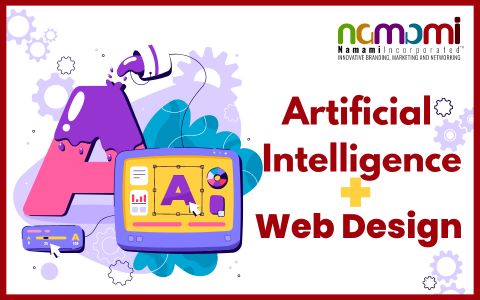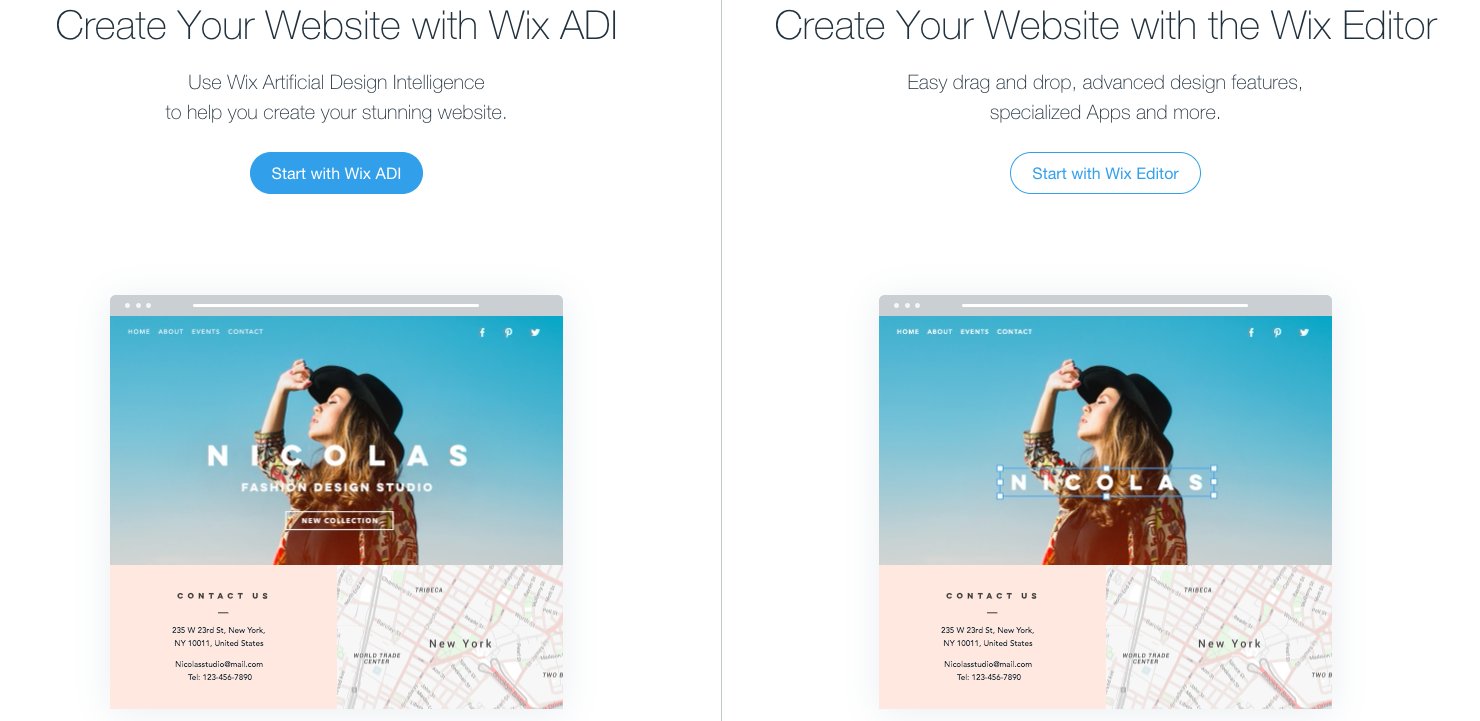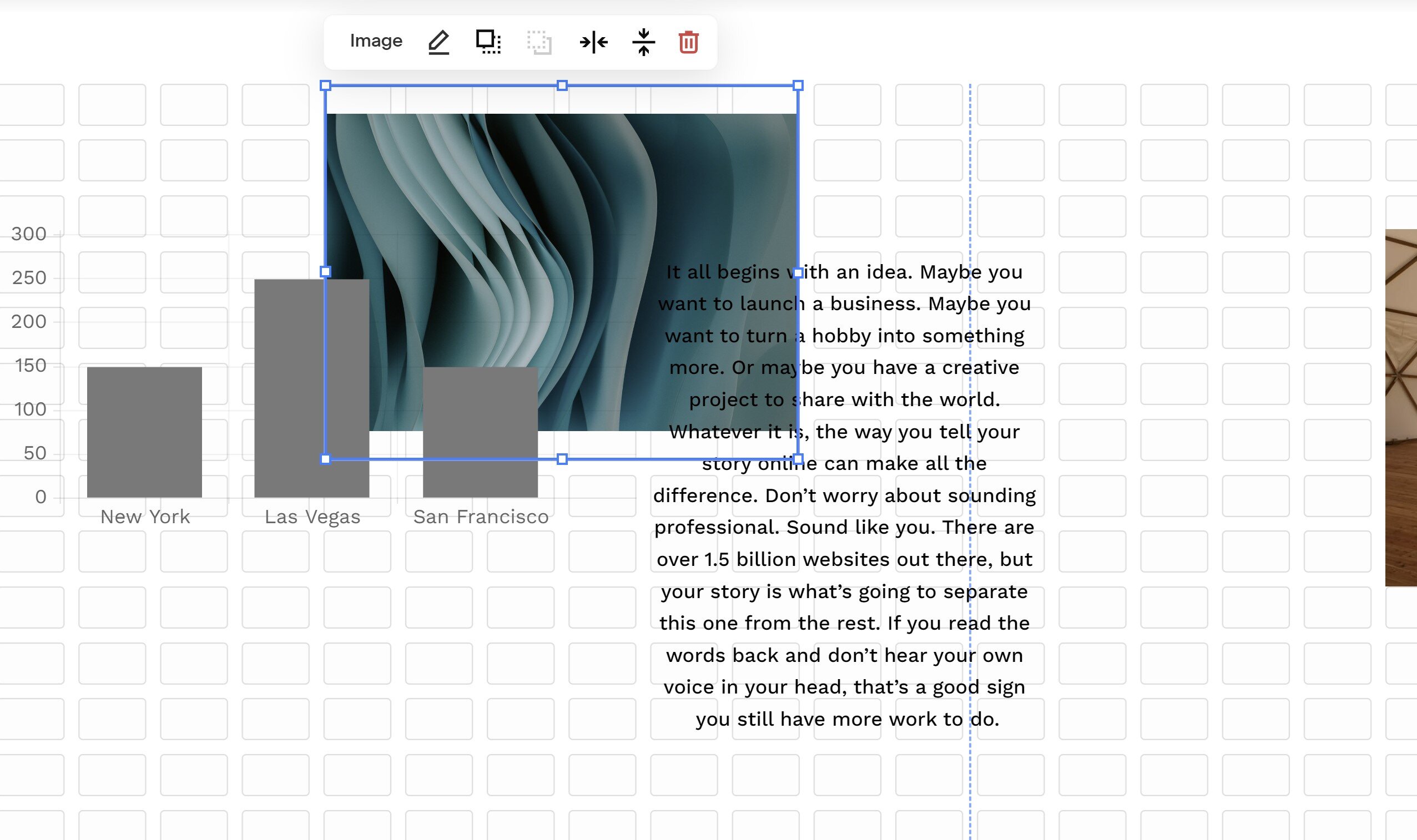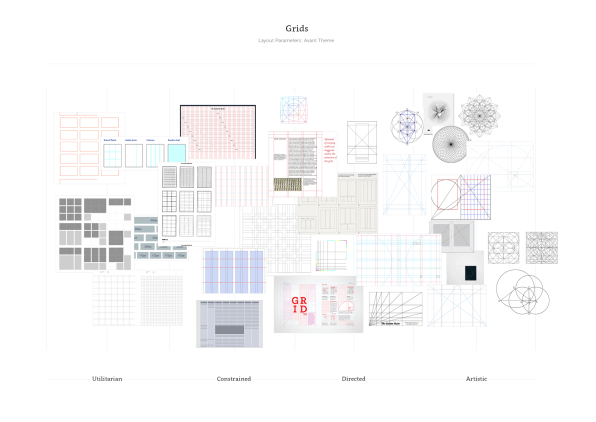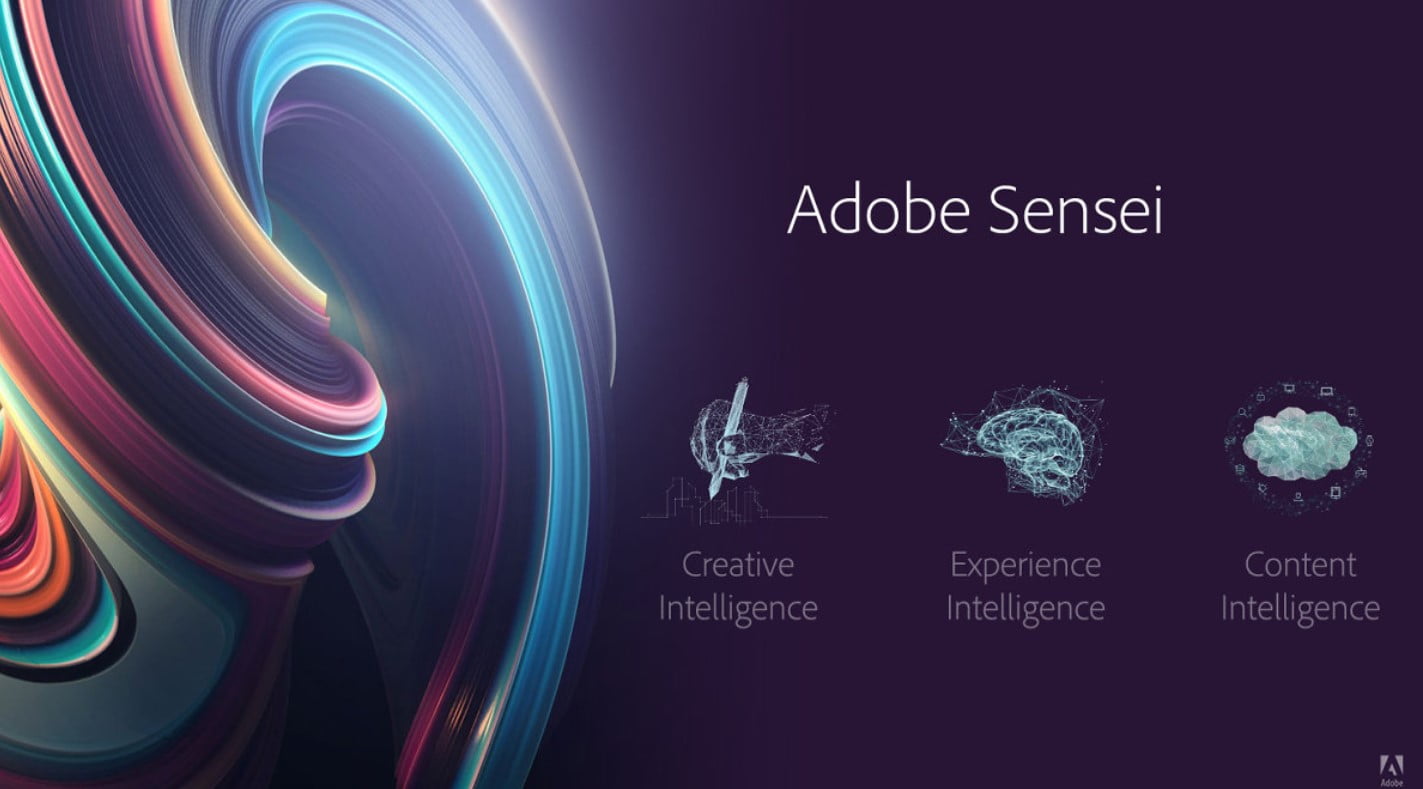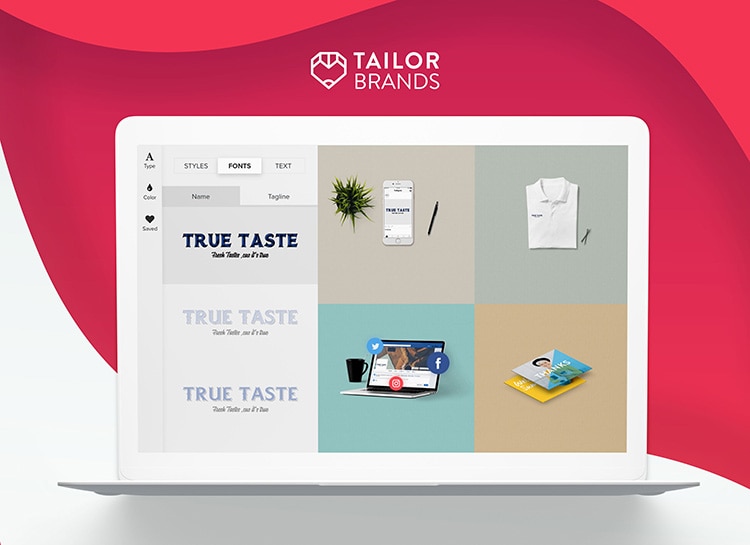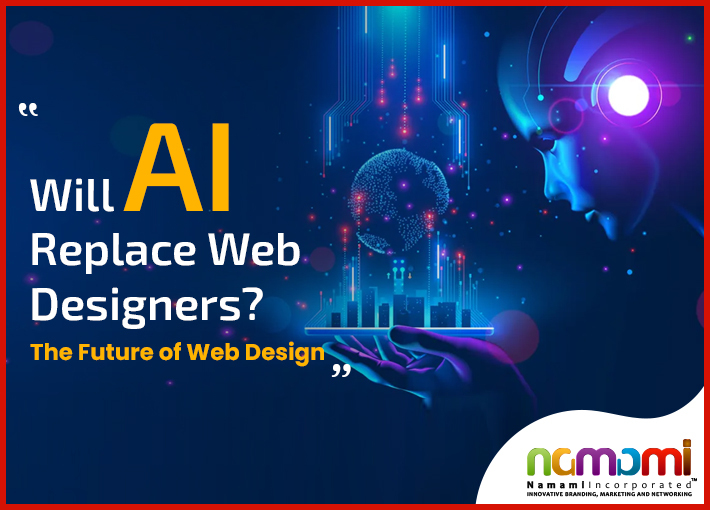
In the current era of advanced technology and artificial intelligence (AI) taking over every digital skill, a captivating question emerges: Could artificial intelligence (AI) take the place of web designers, those creative architects behind our favorite websites? With AI making remarkable strides in various fields, the web design community is buzzing with curiosity and concern. As AI becomes increasingly sophisticated, it's natural to wonder about its potential impact on the future of web design.
As a leading web design company in Florida, we take a closer look at whether AI might replace web designers, the unique role of human creativity, and the exciting possibilities that lie ahead.
The Rapid Advancement of Artificial Intelligence (AI) in Various Industries
In recent years, artificial intelligence has been making waves across diverse industries, from healthcare and finance to manufacturing and entertainment. AI has proven its mettle in automating tasks, analyzing vast datasets, and even outperforming humans in certain specialized domains. The rapid evolution of AI technologies is a testament to its potential to reshape how we work and live.
In healthcare, AI is revolutionizing disease diagnosis through image recognition, while in finance, it's optimizing investment portfolios with machine learning algorithms. In manufacturing, AI-powered robots are enhancing efficiency, and in entertainment, AI is creating stunning visual effects and personalized content recommendations.
Internet marketing has emerged as a game-changer in marketing industry. From automating personalized content recommendations to optimizing ad campaigns in real-time, AI is reshaping the way businesses reach and engage their audience online. AI and Marketing is seems like something build for each other with its ability to analyze vast amounts of data and predict user behavior, AI empowers marketers to make data-driven decisions, resulting in more effective strategies and higher conversion rates.
The Million Dollar Question: Can AI Replace Web Designers?
One of the intriguing questions that arise amidst these advancements is whether AI has the capability to replace web designers, the creative minds behind the digital landscapes we interact with daily.
It's a question that has been met with both curiosity and apprehension within the web design community. The future likely holds a symbiotic relationship between AI and web designers, where both work in tandem to create exceptional online experiences.
Artificial Intelligence AI has made significant strides in automating various aspects of web design. Automated website builders can generate web layouts and suggest color schemes, reducing the time and effort required for the initial design process. AI algorithms can analyze user behavior, providing insights to personalize website content and user experiences. This automation streamlines the creation of websites, making it seem like AI could potentially take over the web design process but there always a room of improvement and human creativity and imagination have no limits!
The Importance of Discussing AI's Potential Impact on the Web Design Field
As AI's capabilities continue to grow, it's crucial to engage in discussions about its potential impact on the web design field. These conversations are essential for several reasons:
- Future Preparedness: By acknowledging AI's potential, web designers can proactively adapt to this changing landscape, identifying opportunities for collaboration and skill development.
- Quality Control: Understanding AI's strengths and limitations helps maintain the quality of web design projects. AI can handle repetitive tasks, but it may struggle with creativity and complex problem-solving.
- Ethical Considerations: AI in web design raises ethical questions regarding data privacy, bias in algorithms, and the potential for AI-generated content to deceive users. These issues require careful consideration and regulation.
- Collaborative Potential: Rather than viewing AI as a competitor, web designers can explore how AI can complement their skills, leading to more efficient and innovative design processes.
In this rapidly evolving digital world, it's clear that AI is here to stay and will continue to influence the web design industry. By embracing the potential for collaboration between AI and human designers, we can navigate this future with creativity and innovation, ensuring that web design remains a dynamic and essential component of the online experience.
The Rise of AI in Web Design
The digital landscape is undergoing a transformative revolution, and at the forefront of this change is the remarkable ascent of Artificial Intelligence (AI). With AI's pervasive influence extending across various domains, it's not surprising that web design, a field intimately tied to technology and user experience, is also experiencing a profound shift. In this section, we'll delve into the growing influence of AI in web design and explore how it is reshaping the way we create and experience websites.
Automated Website Builders:
One of the most visible manifestations of AI in web design is the emergence of automated website builders. These powerful tools leverage AI algorithms to simplify the process of creating a website. They can generate layouts, recommend color schemes, and even assist in content creation and copy writing, all with minimal human intervention. This automation dramatically reduces the time and effort traditionally required for the initial design phase, democratizing web design and making it more accessible to a broader audience.
Customization at Scale:
AI's ability to analyze vast amounts of data and user behavior has unlocked a new era of customization in web design. Websites can now adapt and personalize content and user experiences on a scale never before imagined. AI algorithms can identify user preferences, suggest products, and curate content in real-time, resulting in a more engaging and relevant web experience. This personalization not only enhances user satisfaction but also drives conversions, making it a powerful tool for businesses.
Speed and Efficiency:
Efficiency is the hallmark of AI, and it's no different in web design. AI-powered tools can automate repetitive tasks, such as resizing images, optimizing code, and conducting routine maintenance. This not only accelerates the web development process but also reduces human error. As a result, websites can be launched more quickly and reliably, allowing businesses to establish their online presence without unnecessary delays.
AI vs. Human Creativity
Can AI truly rival the boundless creativity and innovation brought to the table by human designers? To answer this, we must consider the respective strengths and limitations of AI in comparison to its human counterparts.
Creativity and Innovation
AI's Strengths: AI excels in the realm of data-driven creativity. It can analyze vast datasets, identify patterns, and generate content or designs based on established norms. This capacity for data-driven creativity is evident in AI-generated art, music, and even web layouts. AI's algorithms can synthesize trends and preferences, producing designs that resonate with specific target audiences.
Complex and Unique Projects
AI's Strengths: AI's strength in handling routine and data-intensive tasks is particularly evident in complex web projects. When it comes to projects that require data analysis, personalization at scale, or repetitive design variations, AI can outperform humans in terms of speed and efficiency. This is especially valuable for e-commerce websites design with vast product catalogs or news websites with continuously updated content.
AI's Limitations: However, when it comes to complex and unique projects that demand unconventional solutions or artistic flair, AI falls short. AI algorithms are not equipped to handle the intricacies of highly customized designs or to navigate uncharted creative territories. For projects that require storytelling, emotional resonance, or the translation of abstract ideas into visuals, human designers remain indispensable.
Human Designers' Strengths: Human designers thrive when tackling complex and unique projects. They can bring an array of skills to the table, from artistic sensibilities to problem-solving abilities. They excel in conceptualizing and executing designs that evoke specific emotions, convey brand identity, or address novel challenges.
So, Who's Better AI or Human?
In the ongoing debate of AI vs. human creativity in web design, it's crucial to recognize that these two forces are not in opposition but can complement each other. The future of web design may involve a collaborative synergy where AI enhances efficiency, data-driven decisions, and scalability, while human designers continue to inject their unique creativity, storytelling prowess, and artistic vision into the digital landscape. It's a partnership that promises to push the boundaries of design innovation while preserving the essence of human creativity in the ever-evolving world of web design.
The Collaborative Future
As the evolution of web design continues, a promising vision emerges—one where artificial intelligence (AI) and human designers collaborate harmoniously to create digital experiences that transcend individual capabilities. In this section, we embark on a journey into the concept of collaboration between AI and human designers, highlighting the symbiotic relationship that could define the future of web design.
Enhanced Productivity
AI's Role: AI is a powerhouse when it comes to enhancing productivity in web design. It can swiftly tackle repetitive tasks, such as resizing images, generating code, and conducting routine maintenance. This automation frees up valuable time for human designers to focus on high-level creative tasks, client interactions, and strategic planning.
Human Designers' Role: Human designers bring a wealth of creativity, critical thinking, and empathy to the table. They excel in understanding the nuances of client requirements and translating them into visually compelling and emotionally resonant designs. Their ability to envision unique concepts and tell brand stories is irreplaceable.
Improved User Experiences
AI's Role: AI's data-driven insights are invaluable for optimizing user experiences. It can analyze user behavior, preferences, and trends to provide actionable recommendations. AI-driven personalization ensures that users are presented with relevant content, leading to increased engagement and conversions.
Human Designers' Role: Human designers are the architects of user experiences. They craft intuitive navigation, aesthetically pleasing interfaces, and emotionally resonant designs that leave a lasting impression. Human creativity is essential in developing user-centric designs that cater to diverse audiences.
Cost-Effective Solutions
AI's Role: AI-driven tools can provide cost-effective solutions for web design projects. Automated website builders and design templates reduce design time and overhead costs, making web design services more accessible to businesses with tight budgets.
Human Designers' Role: Human designers bring a strategic perspective to cost-effective solutions. They can assess business goals, user needs, and industry trends to tailor designs that maximize ROI. Human expertise ensures that cost-effective solutions do not compromise on quality or creativity.
At Namami Inc, we offer cost effective web design services especially for brands and businesses, our Corporate web design service are money saver with right company image on your enterprise website!
Real-World Examples
To grasp the tangible impact of AI in web design and the potential for collaboration, let's explore real-world applications and success stories that showcase the prowess of AI-powered solutions.
AI-Powered Website Builders and Their Features
AI-powered website builders have emerged as game-changers in the world of web design. These platforms harness the capabilities of artificial intelligence to simplify the website creation process, making it accessible to a broader audience.
1. Wix ADI:
Wix's Artificial Design Intelligence (ADI) is an example of AI in action. It analyzes user inputs and generates a customized website design based on preferences and requirements. ADI suggests layouts, color schemes, and content structures, offering users a tailored starting point.
2. Squarespace's LayoutEngine:
Squarespace employs AI-driven LayoutEngine to automatically position elements within a webpage, ensuring optimal aesthetics and functionality. This feature streamlines the design process and produces visually pleasing results.
3. BookmarkAida:
Bookmark Aida is an AI web design assistant that guides users through the entire website creation process. It not only helps with design elements but also integrates e-commerce capabilities, making it a comprehensive solution for online businesses.
Case Studies of Successful Collaborations between AI and Human Designers
1. The Grid: Balancing Automation and Creativity
"The Grid" is a notable example of a platform that combines AI with human oversight. It uses AI algorithms to analyze content and user behavior, automatically adjusting website layouts and designs. However, it also allows human designers to step in and fine-tune the AI-generated designs, ensuring that the final product aligns perfectly with the client's vision.
2. Adobe Sensei: AI Augmenting Creative Workflows
Adobe Sensei, an AI-powered tool within Adobe's Creative Cloud suite, aids designers by automating time-consuming tasks. It offers features like automatic image tagging, content-aware cropping, and font identification. Designers can leverage these AI-driven capabilities to streamline their workflow and focus on higher-level creative tasks.
3. Tailor Brands: Crafting Brand Identities
They uses AI to assist businesses in creating their brand identities. It help create AI generated logos, business cards, and other branding materials based on user preferences and industry norms. While the initial designs are AI-generated, human designers are available for customization and refinement, striking a balance between efficiency and personalization.
The Importance of Creativity
In the world of web design, where technology and aesthetics converge, creativity stands as an enduring cornerstone. It's the spark that transforms a collection of web pages into a captivating digital experience. In this section, we emphasize the irreplaceable value of human creativity in web design, exploring its role in storytelling, emotional appeal, artistic vision, and problem-solving abilities.
Storytelling and Emotional Appeal
Storytelling: Human creativity weaves narratives into web design. It enables designers to craft a compelling story that engages users, guiding them through a memorable online journey. A well-told story not only captures attention but also forms a lasting connection with the audience.
Emotional Appeal: Creativity infuses web designs with emotion. It evokes feelings, whether it's the excitement of discovering a new product, the trust in a brand's reliability, or the joy of exploring a beautifully designed website. Emotional resonance creates a bond between users and the brand, fostering loyalty and trust.
Artistic Vision and Innovation
Artistic Vision: Human designers bring their unique artistic vision to web design projects. They use color palettes, typography, and visual elements to create visually stunning and harmonious compositions. Artistic flair distinguishes a website from the ordinary, making it memorable and impactful.
Innovation: Creativity is the birthplace of innovation in web design. Human designers continually push the boundaries, seeking fresh and innovative solutions to design challenges. They introduce novel features, design paradigms, and user interactions that set trends and inspire others in the industry.
Problem-Solving Abilities
Complex Challenges: Creativity equips human designers with problem-solving abilities to tackle complex challenges. Whether it's optimizing user experiences, addressing accessibility issues, or finding unique solutions for client requirements, creativity is the driving force that leads to effective and elegant solutions.
Adaptability: Human creativity also shines in its adaptability. Designers can pivot and adjust strategies based on changing project demands, emerging technologies, and evolving user expectations. This flexibility ensures that web designs remain relevant and effective over time.
The Role of Human Designers in AI-Powered Web Design
As the digital landscape evolves, the relationship between human designers and artificial intelligence (AI) is taking center stage. Rather than replacing human designers, AI is augmenting their capabilities and reshaping their roles. In this section, we'll delve into the evolving role of human designers in the era of AI, emphasizing their adaptability, client communication and strategy development, as well as their crucial oversight and quality assurance functions.
Adaptation and Upskilling
Adaptation: Human designers are agile learners and adapters. In the AI-powered web design landscape, they embrace AI as a tool to enhance their creative process. They explore how AI can expedite tasks, automate repetitive processes, and provide data-driven insights.
Upskilling: Human designers invest in upskilling to harness the potential of AI. They acquire knowledge in AI tools, data analysis, and machine learning concepts, enabling them to collaborate effectively with AI-driven systems. This upskilling empowers designers to leverage AI as a creative ally.
Client Communication and Strategy Development
Client Communication: Human designers excel in client communication. They understand clients' unique needs, aspirations, and brand identities. This deep understanding allows them to translate clients' vision into a web design strategy that resonates with their target audience.
Strategy Development: Human designers remain the architects of design strategy. They combine their creative insights with AI-generated data to craft innovative design solutions. They envision user experiences, define brand narratives, and strategize how AI can be harnessed to achieve design goals.
Oversight and Quality Assurance
Oversight: Human designers provide critical oversight in AI-powered web design projects. They ensure that AI-generated designs align with client objectives and brand identity. They review and refine AI-generated content to maintain consistency and quality.
Quality Assurance: Human designers conduct rigorous quality assurance checks. They assess design elements for aesthetic appeal, functionality, and user-friendliness. Their discerning eye ensures that the final web design meets high standards and delivers an exceptional user experience.
A Balanced Approach
In the dynamic world of web design, achieving the best results often involves striking a balance between technology and creativity. In this section, we advocate for a balanced approach to AI integration in web design, one that harnesses the efficiency of AI, nurtures creative expertise, and recognizes the value of collaboration between humans and machines.
Leveraging AI for Efficiency
Streamlining Workflows: AI can be a powerful ally in streamlining design workflows. It excels at automating repetitive tasks, optimizing code, and providing data-driven insights. By integrating AI into design processes, designers can work more efficiently, saving time and resources.
Data-Driven Decisions: AI can analyze vast amounts of data to inform design decisions. It can identify user behavior trends, preferences, and pain points. This data-driven approach ensures that design choices are rooted in empirical evidence, enhancing user experiences and boosting conversions.
Nurturing Creative Expertise
Preserving Creativity: While AI can assist with various aspects of design, human creativity remains unparalleled in its ability to conceive unique and emotionally resonant concepts. Designers should continue to cultivate their creative expertise, pushing the boundaries of innovation and storytelling.
Embracing Originality: Human designers should embrace their role as innovators. They should leverage AI as a tool to amplify their creative vision rather than supplant it. AI-generated content can serve as a canvas for human designers to inject their unique website branding in any industry.
Recognizing the Value of Collaboration
Synergy of Strengths: The real magic happens when AI and human designers collaborate. AI contributes efficiency, data insights, and automation, while human designers provide creativity, empathy, and strategic vision. This synergy yields web designs that are both impactful and efficient.
Client-Centric Approach: Collaboration enables a client-centric approach to web design. Designers can communicate with clients effectively, aligning design solutions with client goals and brand identities. The combination of AI-driven data and human understanding results in tailored designs that resonate with users.
In a Nutshell
In the final section of this article, we'll summarize the main takeaways and highlight the exciting possibilities that lie ahead as AI and human designers continue to shape the future of web design together. We've witnessed AI's impressive strides in automating tasks, providing data-driven insights, and streamlining design processes. We've also celebrated the enduring value of human creativity, from storytelling and emotional resonance to innovation and problem-solving abilities.
FAQ's
1. How can AI be used in website design?
AI aids in web design by automating tasks like layout creation and content generation. It personalizes user experiences, offers chatbot support, optimizes media, conducts A/B testing, and enhances security.
2. What are the benefits of using AI in web design?
Benefits include efficiency, personalization, data-driven insights, cost savings, improved user experience, and enhanced security through automation and customization.
3. Are there any downsides or challenges to using AI in web design?
Challenges include initial costs, the learning curve, privacy concerns, potential overreliance, technical issues, and ethical considerations related to AI-driven decisions.
4. Can AI completely replace human web designers?
AI can automate many tasks but won't replace human designers entirely. Human creativity, critical thinking, and understanding of unique client needs remain essential.
5. How can I get started with AI in web design?
Start by researching AI web design tools, investing in AI training, implementing small AI features, and staying updated on AI trends and best practices in web design. Use AI as a tool to enhance your design skills.
The question of whether AI will replace human web designers, but the answer is clear: AI is a powerful tool, but it cannot fully replace the irreplaceable—the human creative spirit. It lacks the intrinsic ability to envision the novel, challenge established paradigms, and infuse designs with authenticity and emotion. AI may automate, but it is human designers who elevate web design to an art form.
As we look ahead, we envision a future where AI and human creativity coexist harmoniously, each complementing the other's strengths. AI augments efficiency, offers data-driven insights, and empowers designers to work smarter. Human designers bring life to digital experiences, infusing them with stories, emotions, and innovation.
Namami utilizes the latest AI technology combined with a team of highly skilled, passionate people to offer clients the best of both worlds! Our passion is unparalleled, our work is top-notch, and we are here to help you create & manage beautiful, useful marketing products and platforms. Let us help you stand out from the online crowd. Join our Instagram Community or get in touch: Contact@NamamiInc.com.
